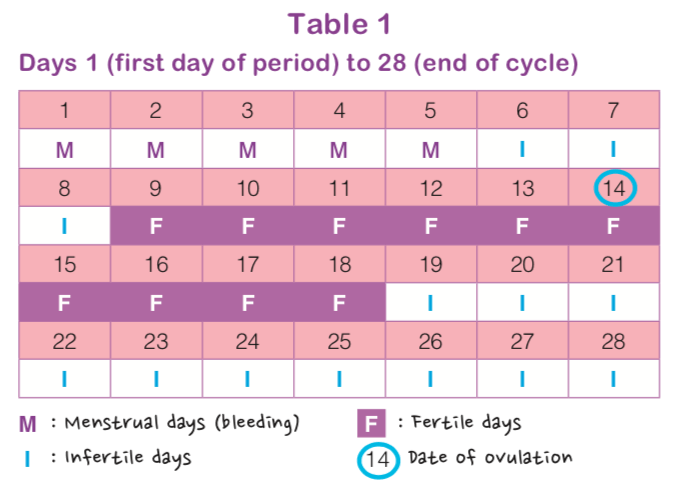POSITIVELY PREGNANT
TIMING
YOUR PREGNANCY
Most people take their fertility for granted, assuming that when contraception is stopped, pregnancy will follow in two or three months. But that is not always the case.
Some couples also need to plan the date they want to conceive due to any number of reasons, including job demands. But if you have no known fertility problems, this is how you can time your pregnancy.
One egg and millions of sperm
Fertilisation is the union of a man’s sperm and a woman’s egg. Its takes place in
the fallopian tube. The fertilised egg then travels down this tube to the uterus (womb). Each month, about 8-10 follicles will develop, but only one will mature. The mature follicle will release one ovum (egg) and it will travel down the fallopian tube. This process is known as ovulation. It usually (but not always) occurs 11-16 days before menstruation. The trick to getting pregnant quickly is to work out exactly when ovulation occurs and to have sex around this time.
The female menstrual cycle

Table 1 offer a general outline of a woman with a 28-day menstrual cycle. It is important to note that fertility patterns vary from woman to woman and from cycle to cycle.
The calendar method
The simplest – but least accurate – way is to count 12-16 days from the first day of your last menstrual period. This will give you an approximate time of ovulation. Having sex during these days means that you are more likely to become pregnant.
This method is not very reliable because it assumes that every woman will ovulate on day 14 of every 28-day cycle (which isn’t the case).
The basal temperature rhythm
Your temperature changes throughout your menstrual cycle. It is usually lower before you ovulate and higher after ovulation. Knowing your basal temperature rhythm is the most accurate way to tell you when ovulation has occurred, so you can use this information to try to conceive the following month. You will need to purchase a thermometer and take your temperature every morning as soon as you wake up (before you get out of bed) and record the readings on a chart beside your bed.
Fertile mucous symptoms
Another sign of fertility is checking your vaginal mucous. Throughout your menstrual cycle, the mucous in your vagina alters. As ovulation approaches, mucous changes in texture, volume and, sometimes, colour. There is also a change in sensation of dryness and wetness in the genital area. The exact nature of this change varies from woman to woman, however.
Fertile mucous is generally watery, clear, copious and you can stretch it between your fingers. Infertile mucous is thicker, sticky and cloudy or opaque in colour. There will be less of it and at some times of the month it may be hard to see. Recording the type and amount of mucous can help you pin-point when ovulation occurs. The last day of fertile mucous is generally the day before ovulation occurs.
Cervical changes
Your cervix softens when ovulation approaches. After ovulation, it gets firmer and lower. Recording these changes each day can also give you a better picture of when ovulation is occurring.
The husband factor
To improve the chances of conceiving, the male sperm count needs to be as high as possible, ideally 20-150 million per millilitre of semen. Repeated ejaculations over a short period will lower sperm count.
